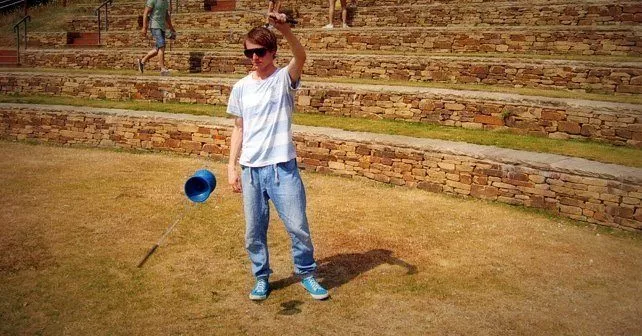The diabolo is a circus skill, also referred to as a juggling toy, which consists of a spool propelled and manipulated by a player using a length of string attached to two sticks, one held in each hand.
The basic act of playing with a diabolo involves making the diabolo spin by dragging the string over the axel in order to create friction, which in turn causes the diabolo to spin.
By providing slack with one of the handsticks, and pulling the other tight the player is able to alter the speed at which the diabolo spins.
Tricks are performed by moving the handsticks in order to move the diabolo and all manner of tricks are created by throwing the diabolo in the air, catching it, balancing it on the handsticks, and creating knots and loops with the string.
Multiple diabolos can also be used at once, however, this being the greatest area of improvement for diabolo users.
Diabolo Origins
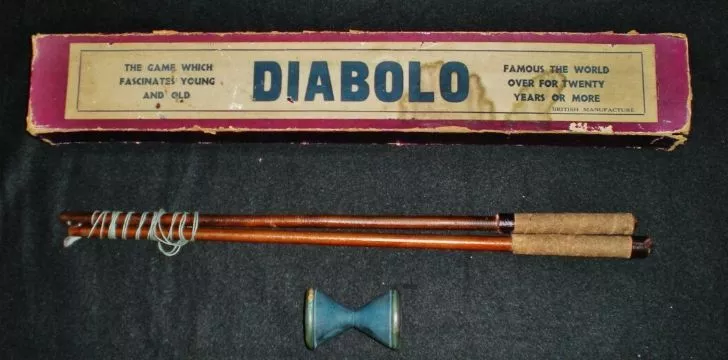
It is difficult to know with precision when the diabolo as we know it came into being.
However, it is said to have evolved in China, developing from the Chinese yo-yo.
The Chinese yo-yo itself has a long, thin axle with disc-shaped wheels while the Westernised version of the diabolo tends to favor a more cone-shaped design.
French engineer Gustave Philippart first developed the modern diabolo in 1906, making the axle from scrap metal and the spools from cut-out old tires!
This diabolo, amongst many other historic diabolos, can be viewed in the French Museum of Diabolo.
This is not where the diabolo first came from, however.
The Oldest Game In History?
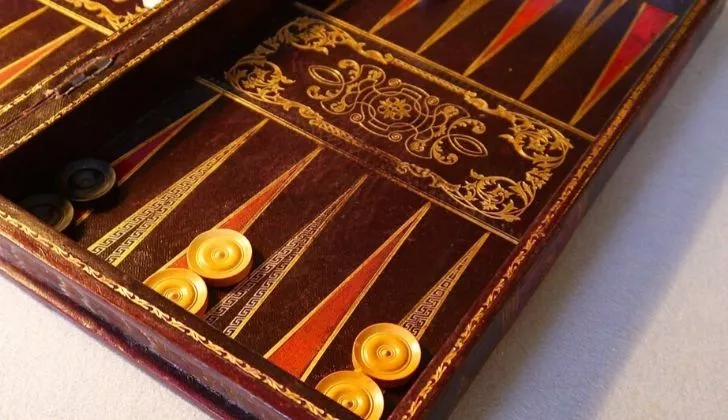
Some historians place the invention of the diabolo somewhere between the 4th and 3rd millennium B.C. in China, thus making it the oldest game in history – even older than Backgammon!
Back in these days the diabolo itself was made of wood or bamboo rather than rubber and metal and was given many names such as “Kouen-gen” – which means “make the hollow bamboo stick whistle”.
In China, there are still diabolos made of bamboo with openings on the side that create a whistling sound when it is spinning.
The term “diabolo” is actually derived from the Greek “dia bollo”, which roughly means “across throw” and was originally coined by Gustave Philippart.
The Diabolo in French History
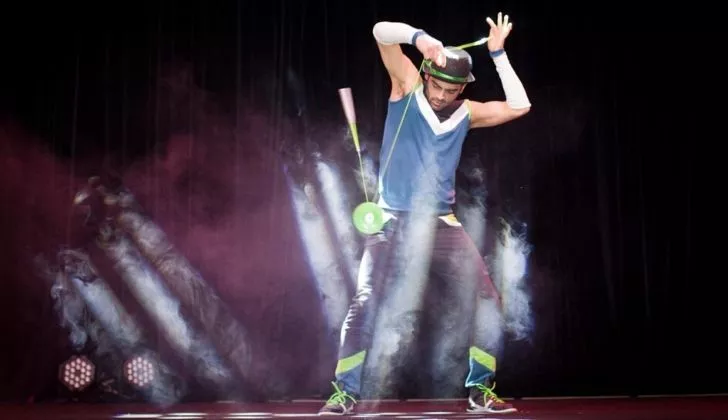
Since its introduction into France, the game was well accepted and immediately loved by the French upper class – some going as far to accept it as the equal and sometimes better of Tennis!
It was viewed as a fashionable object of the upper French class and from 1810 clubs and competitions spread across Paris like wildfire.
After Philippart’s invention of the ‘modern’ diabolo, its popularity seeped through the rest of France and jumped across the channel to Britain.
Despite this, however, the popularity of the diabolo dipped and dropped down during the First World War and it wasn’t until that it gained its former popularity.
This was, in part, due to newer materials and greater precision in its fabrication and creation that allowed a wider range of tricks, styles, and usage from it.
The Modern-Day Diabolo
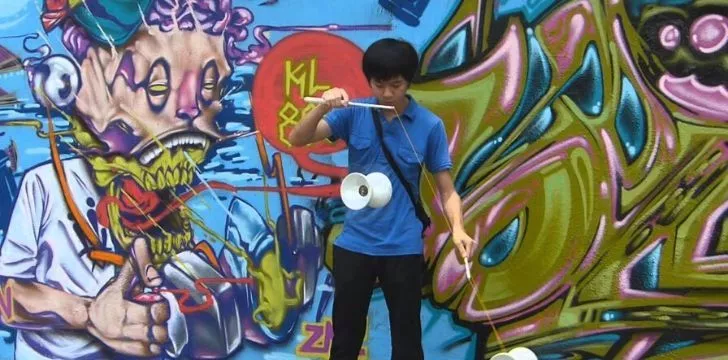
Further on in the late 20th Century and the early 21st Century new types of diabolo were invented and pioneered such as the bearing diabolo.
The bearing diabolo has an axle that spins one way rather than being fixed and runs on ball bearings.
This allows the bearing diabolo to pick up speed quicker than a fixed-axle diabolo and helps it retain this speed, decelerating slower than a regular diabolo.
This makes the bearing diabolo easier to perform certain tricks with, such as grinds and in-the-air tricks.
Another relatively new style of diabolo is the style of contact diabolo.
This tends to a more opposite styling of that associated with the bearing diabolo as this style utilizes the diabolo so that it has little or no speed at all.
The style of contact diabolo relies on catching, passing, and manipulating the diabolo with a different part of the body instead of just the sticks and string.
Contact diabolo is quickly gaining popularity with many tricks being adapted to suit this style as well as multiple diabolo tricks in this style.
Diabolo World Records
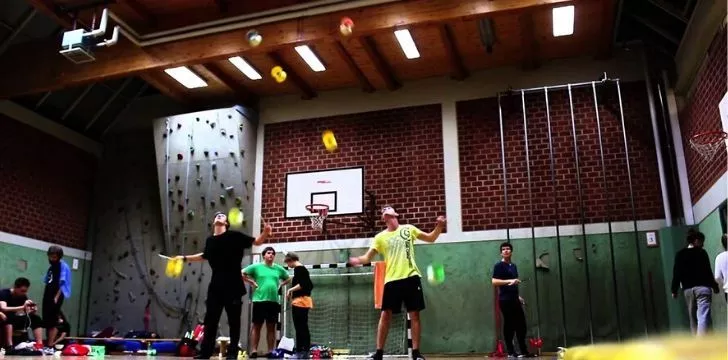
Adrian Hidalgo set the world record for spinning a diabolo around his leg 117 times in one minute, in Madrid, Spain, on January 23, 2009.
Wang Yueqiu set the world record for throwing and catching a diabolo a minimum of 6 meters (19 ft 8 in) high a total of 16 times in one minute in the Guinness World Records Special in Beijing, China, on September 20, 2007.
He also made the world record for manufacturing the world’s largest diabolo, which measured 1.3 meters (4 ft 3 in) in diameter.
Wang Yueqiu also spun the diabolo on the show to demonstrate its working order.
The Guinness World Record for the most people tossing a diabolo is 223, which was achieved by Manor Field Primary School in Burgess Hill, UK, on July 13, 2008.
